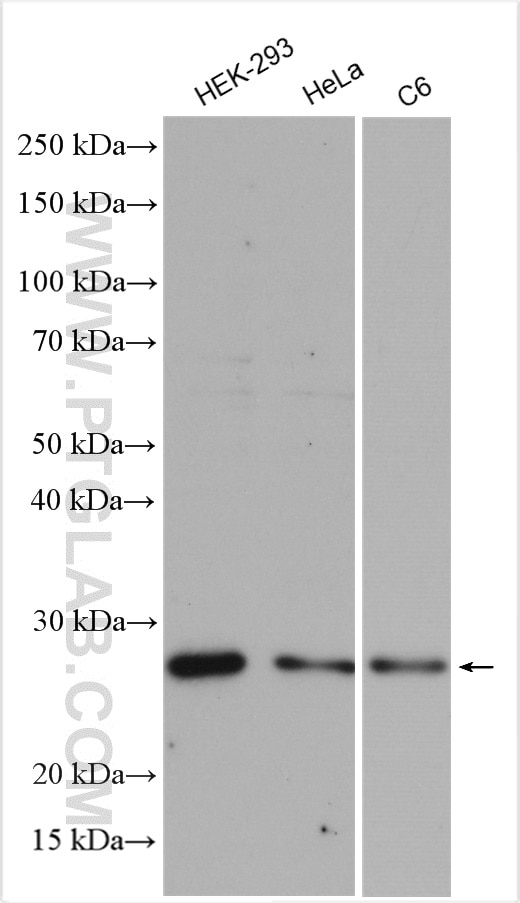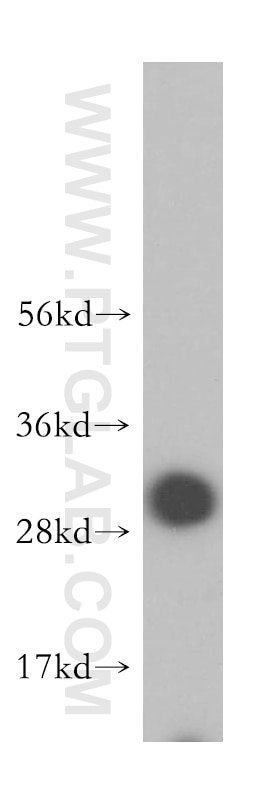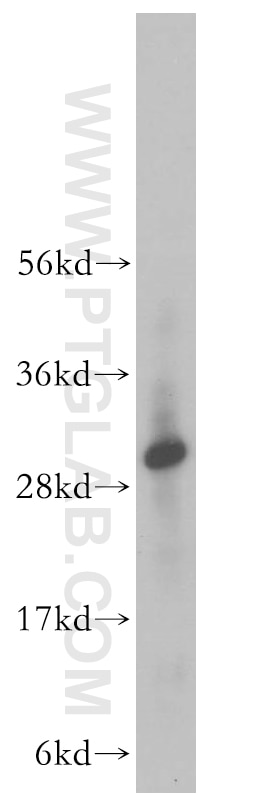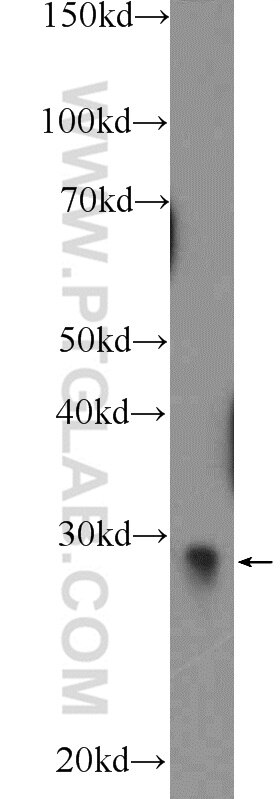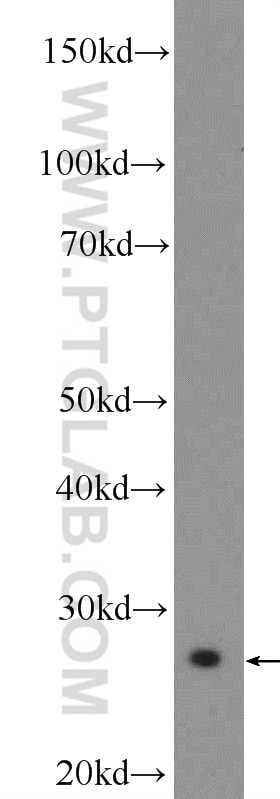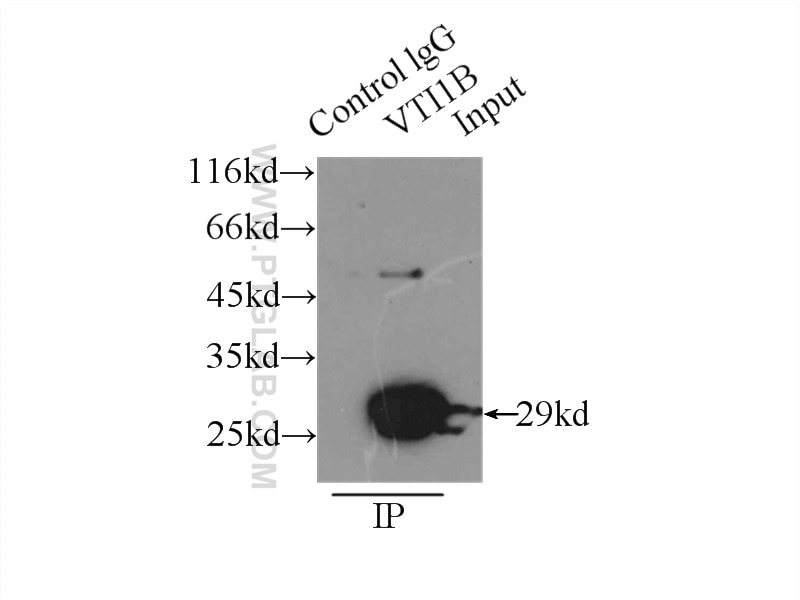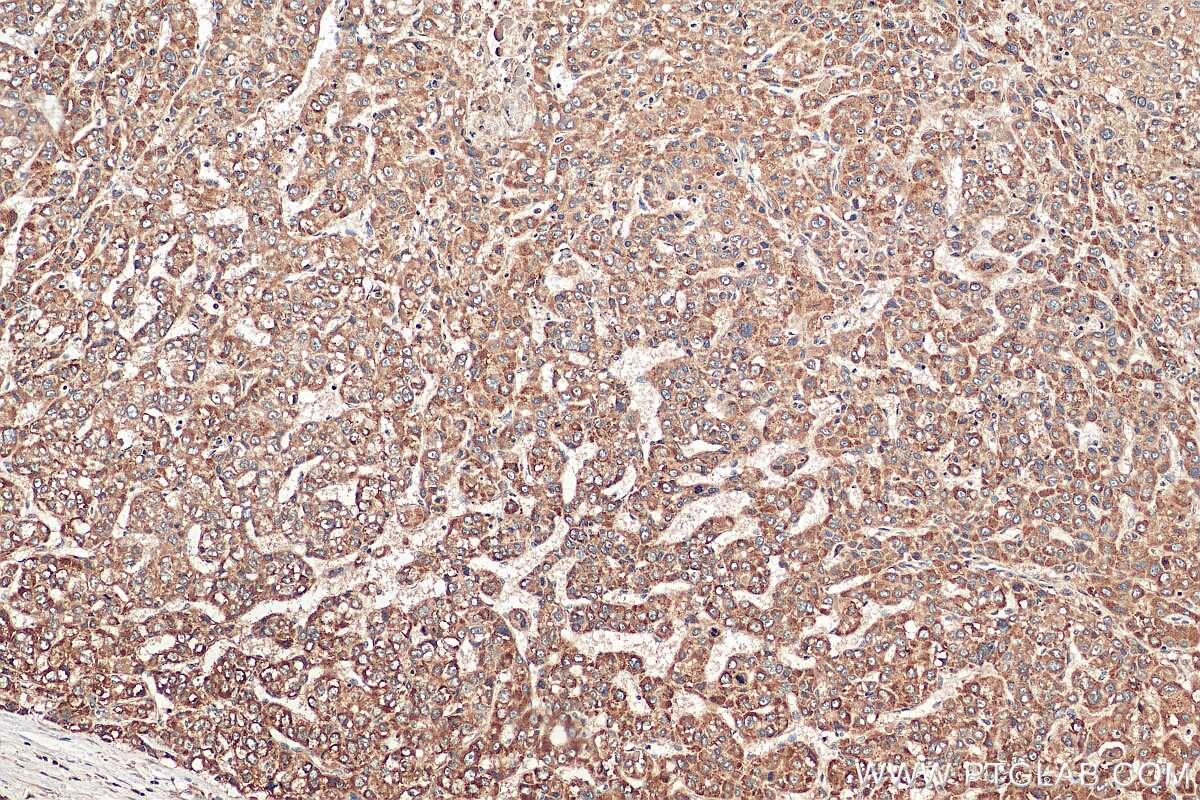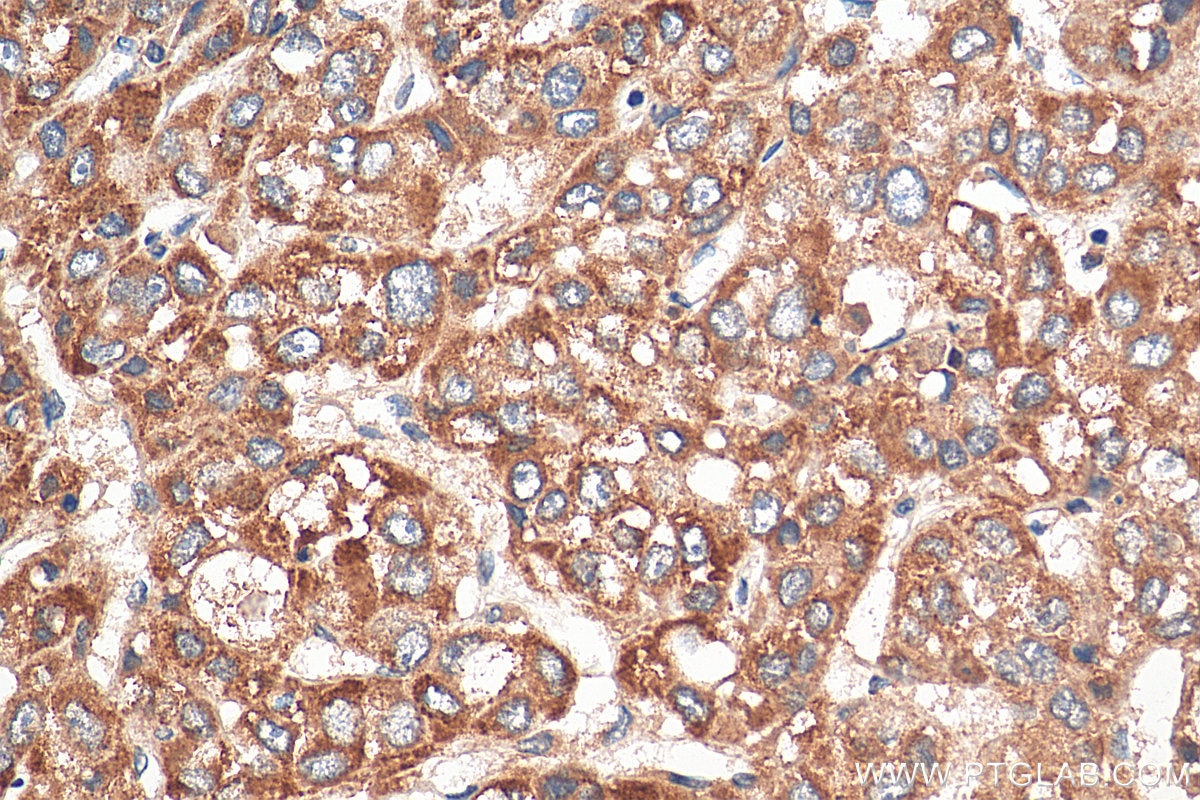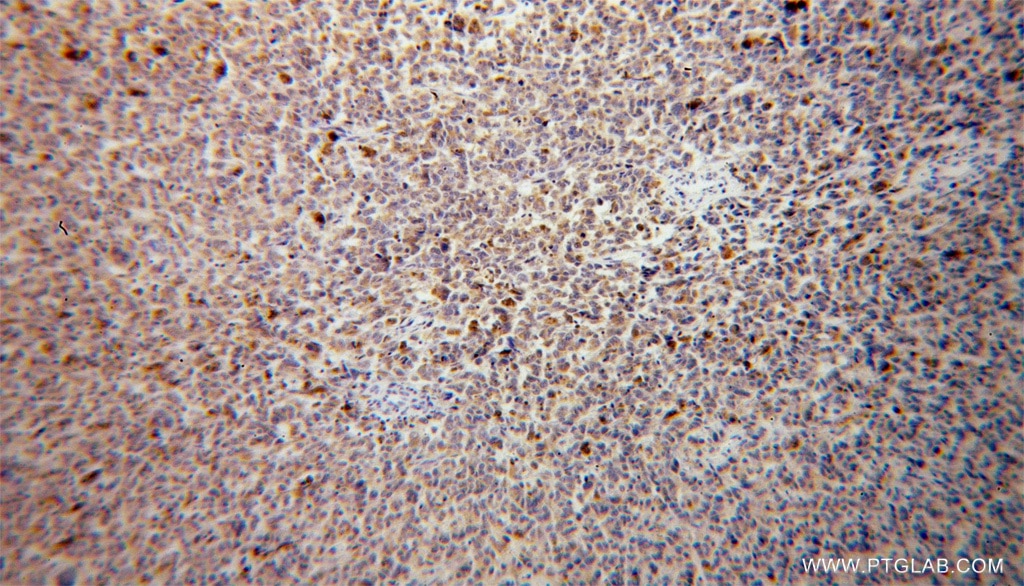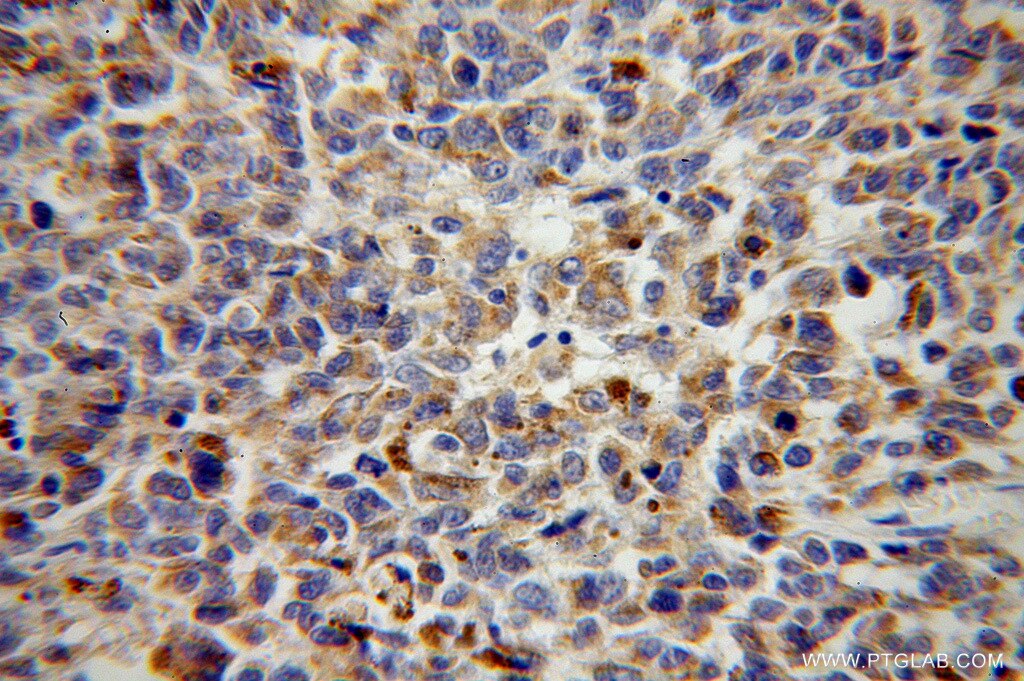- Featured Product
- KD/KO Validated
VTI1B Polyklonaler Antikörper
VTI1B Polyklonal Antikörper für IHC, IP, WB, ELISA
Wirt / Isotyp
Kaninchen / IgG
Getestete Reaktivität
human, Maus, Ratte
Anwendung
WB, IP, IHC, IF, ELISA
Konjugation
Unkonjugiert
Kat-Nr. : 14495-1-AP
Synonyme
Galerie der Validierungsdaten
Geprüfte Anwendungen
| Erfolgreiche Detektion in WB | HEK-293-Zellen, C6-Zellen, HeLa-Zellen, humanes Lebergewebe, NIH/3T3-Zellen |
| Erfolgreiche IP | HeLa-Zellen |
| Erfolgreiche Detektion in IHC | humanes Leberkarzinomgewebe, humanes malignes Melanomgewebe Hinweis: Antigendemaskierung mit TE-Puffer pH 9,0 empfohlen. (*) Wahlweise kann die Antigendemaskierung auch mit Citratpuffer pH 6,0 erfolgen. |
Empfohlene Verdünnung
| Anwendung | Verdünnung |
|---|---|
| Western Blot (WB) | WB : 1:1000-1:4000 |
| Immunpräzipitation (IP) | IP : 0.5-4.0 ug for 1.0-3.0 mg of total protein lysate |
| Immunhistochemie (IHC) | IHC : 1:50-1:500 |
| It is recommended that this reagent should be titrated in each testing system to obtain optimal results. | |
| Sample-dependent, check data in validation data gallery | |
Veröffentlichte Anwendungen
| KD/KO | See 1 publications below |
| WB | See 2 publications below |
| IF | See 1 publications below |
Produktinformation
14495-1-AP bindet in WB, IP, IHC, IF, ELISA VTI1B und zeigt Reaktivität mit human, Maus, Ratten
| Getestete Reaktivität | human, Maus, Ratte |
| In Publikationen genannte Reaktivität | human, Maus |
| Wirt / Isotyp | Kaninchen / IgG |
| Klonalität | Polyklonal |
| Typ | Antikörper |
| Immunogen | VTI1B fusion protein Ag5906 |
| Vollständiger Name | vesicle transport through interaction with t-SNAREs homolog 1B (yeast) |
| Berechnetes Molekulargewicht | 27 kDa |
| Beobachtetes Molekulargewicht | 29 kDa |
| GenBank-Zugangsnummer | BC003142 |
| Gene symbol | VTI1B |
| Gene ID (NCBI) | 10490 |
| Konjugation | Unkonjugiert |
| Form | Liquid |
| Reinigungsmethode | Antigen-Affinitätsreinigung |
| Lagerungspuffer | PBS mit 0.02% Natriumazid und 50% Glycerin pH 7.3. |
| Lagerungsbedingungen | Bei -20°C lagern. Nach dem Versand ein Jahr lang stabil Aliquotieren ist bei -20oC Lagerung nicht notwendig. 20ul Größen enthalten 0,1% BSA. |
Hintergrundinformationen
Fusion between membranes is mediated by specific SNARE (soluble N-ethylmeleimide-sensitive factor attachment protein receptor) complexes. Two human SNARE proteins, VTI1A and VTI1B, are homologous to the yeast Q-SNARE Vtilp which is part of several SNARE complexes in different transport steps (PMID: 12067063). Both proteins had a distinct but overlapping localization. VTI1A is localized predominantly in the TGN, VTI1B in late endosomes (PMID:12067063; 21262811). VTI1B forms a SNARE complex with STX7, STX8 and VAMP8 which functions in the homotypic fusion of late endosomes. It is a component of the SNARE complex composed of STX7, STX8, VAMP7 and VIT1B that is required for heterotypic fusion of late endosomes with lysosomes. It has also been reported that VIT1B interacts with EpsinR, a protein involved in exocytic trafficking (PMID: 15371541).
Protokolle
| Produktspezifische Protokolle | |
|---|---|
| WB protocol for VTI1B antibody 14495-1-AP | Protokoll herunterladen |
| IHC protocol for VTI1B antibody 14495-1-AP | Protokoll herunterladen |
| IP protocol for VTI1B antibody 14495-1-AP | Protokoll herunterladen |
| Standard-Protokolle | |
|---|---|
| Klicken Sie hier, um unsere Standardprotokolle anzuzeigen |
Publikationen
| Species | Application | Title |
|---|---|---|
Autophagy The STX6-VTI1B-VAMP3 complex facilitates xenophagy by regulating the fusion between recycling endosomes and autophagosomes.
| ||
mBio Syntaxin 11 Contributes to the Interferon-Inducible Restriction of Coxiella burnetii Intracellular Infection | ||
Front Cell Dev Biol The SNARE protein Vti1b is recruited to the sites of BCR activation but is redundant for antigen internalisation, processing and presentation |
Rezensionen
The reviews below have been submitted by verified Proteintech customers who received an incentive forproviding their feedback.
FH Tongbin (Verified Customer) (08-25-2020) | This antibody had a specific band at VTI1B's predicted MW ~28 kDa.
|
